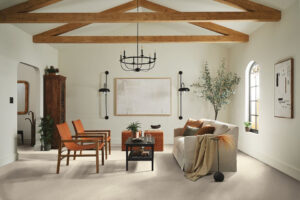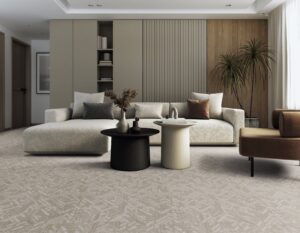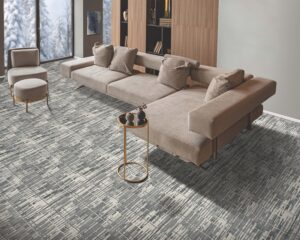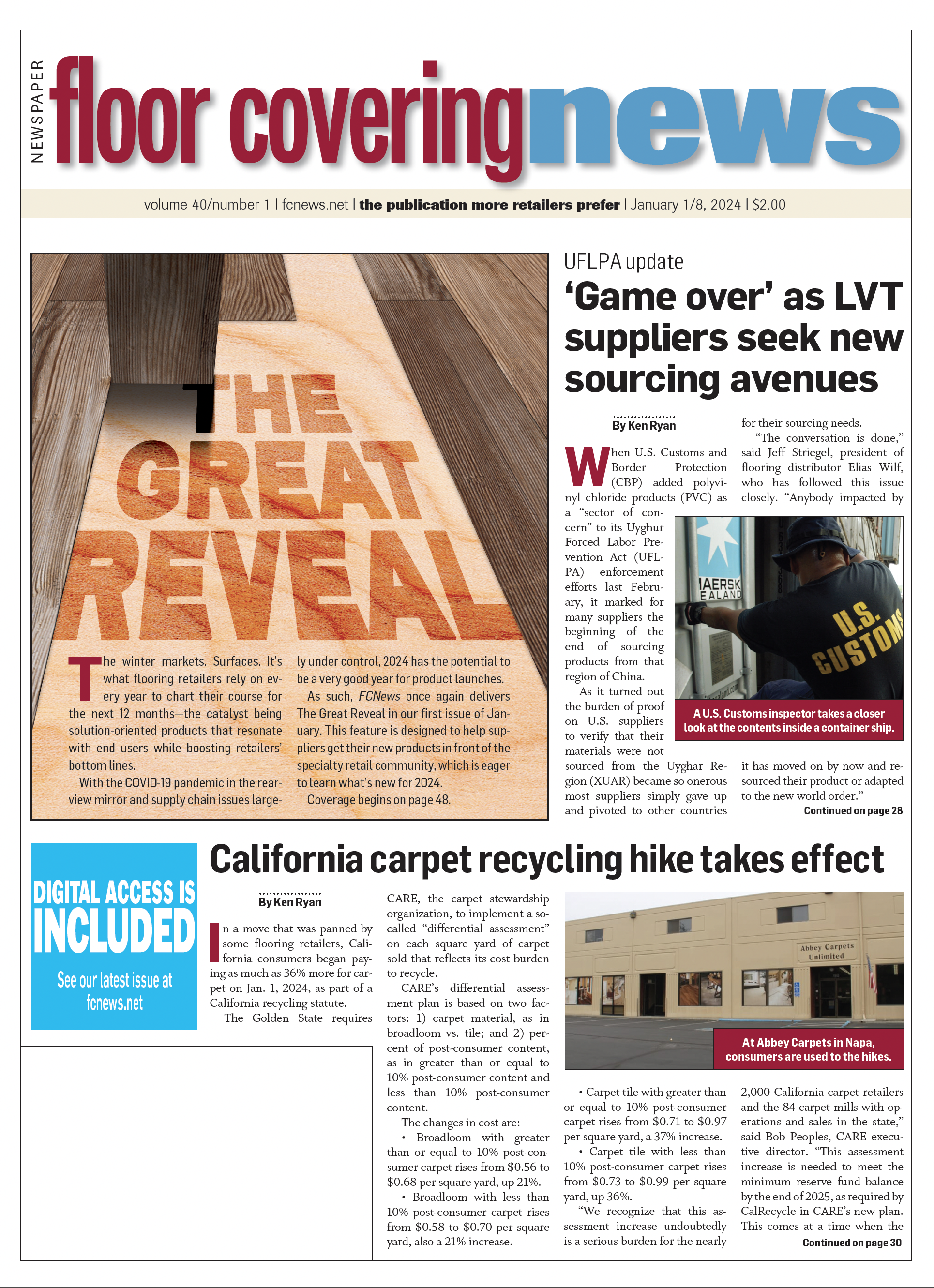
Following its COVID-19-induced spike in sales, the residential carpet market is down more than 20% from where it was just two years. Prospects for 2024 are muted, with the residential segment forecast to contract in the mid-single digits. However, all is not lost in residential. In fact, the higher end of the market—from, say, $14/sq. yd. to $30/sq. yd. and above—continues to be an oasis for soft surfaces.
Observers agree this is an area that will continue to thrive, whether interest rates return to more typical levels or not. “I believe the high-end segment will continue to beat the market average, for a couple of reasons,” said TM Nuckols, president of the residential division, The Dixie Group. “First, the wealthy are less impacted by inflation and poor economic conditions. They will continue to spend money on things like home improvement when most consumers back away from non-essential purchases. Second, high-end carpet is frequently used in custom area rugs, which is a growing segment in the residential flooring market.”

Jason Surratt, president of Tarkett residential, agreed that the high end, especially patterned goods, should continue to see strong activity. “With consumers less frequently moving from their current home during this inflationary period, there will begin to be pent-up demand for residential replacement in retail,” he said.
One factor sustaining high end’s momentum is the way carpet is used in the home. Most of the time carpet is reserved for the bedroom, common areas, basements and stairs. Executives agree this change presents an opportunity to sell higher-end, premium fabrics specifically designed for these areas.
Homeowners staying put
Home resales, which account for the bulk of U.S. housing transactions, were expected to average a little over 4 million units in 2024. That’s compared with an average of 6 million in 2021 during the pandemic housing boom and the 5.3 million average over the past 25 years. The dilemma mills face is that the housing market continues to experience a tug of war between buyers who are priced out due to high mortgage rates (albeit lowering of late) and owners who are locked into their existing mortgages and are not incentivized to move.
Help may be on the way as The Federal Reserve is expected to cut rates by 75 basis points during 2024, with the first cut in the second quarter. Despite the cuts, mortgage rates may still be too high to entice existing homeowners to put their property up for sale, analysts said.

The silver lining for mill executives is that the homeowners who are staying put often have the resources to spend on their homes, whether it is carpet for the bedroom or an area rug. “We recognize that we live in a changing world for the luxury broadloom industry,” said Len Andolino, vice president, decorative division, TDG. “We are getting close to 50% wall-to-wall projects and 50% fabricated area rug projects. The beauty of fabricating broadloom into an area rug is that we can give the consumer exactly what they want in size to the inch, edge finishings and even applied cushions.”
Mills are targeting the affluent, high-end consumer by offering sophisticated colors, differentiated texture and styling and, of course, luxurious softness. As Jonathan Cohen, CEO of Stanton, explained, “We will continue to invest in high-style, innovative products. High-style, high-quality, quick-ship rugs in both standard and custom sizes and finishes will continue to be important as well.”
Jamie Welborn, senior vice president of product management, soft surface for Mohawk, said the industry will see “an opportunity in trade up with patterns and colorations. Consumers are willing to spend more on a differentiated carpet.”
With young home shoppers itching to get into the market, there is hope that 2024 will be the year when pent-up demand finally comes to fruition. The good news is that home-buying affordability, which hit the worst level in decades this fall, is improving. According to the real-estate brokerage Redfin, the typical housing payment for a buyer purchasing a median-priced home with a 20% down payment was $2,503 in the four weeks ended Dec. 10, the lowest level since April 2023.

